Monumentet for Victor Emmanuel II

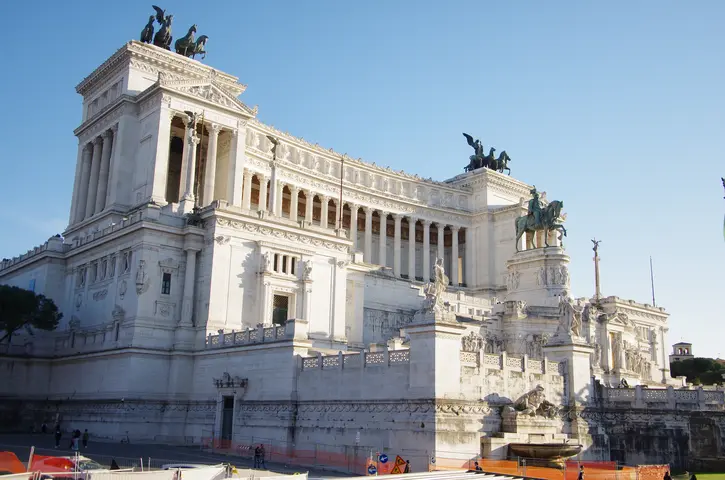
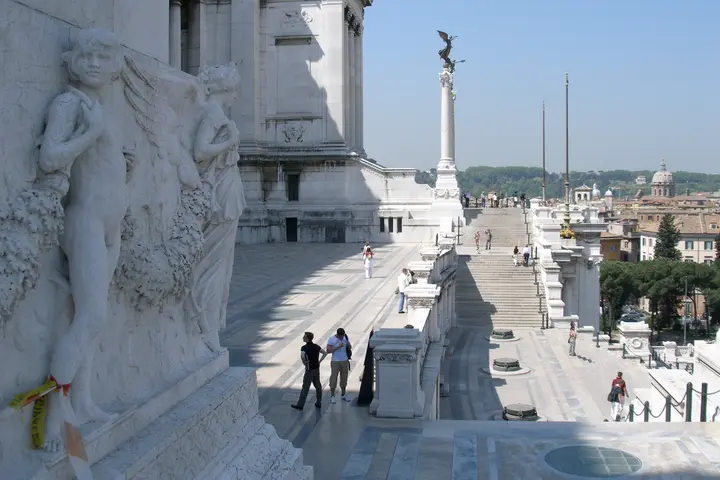
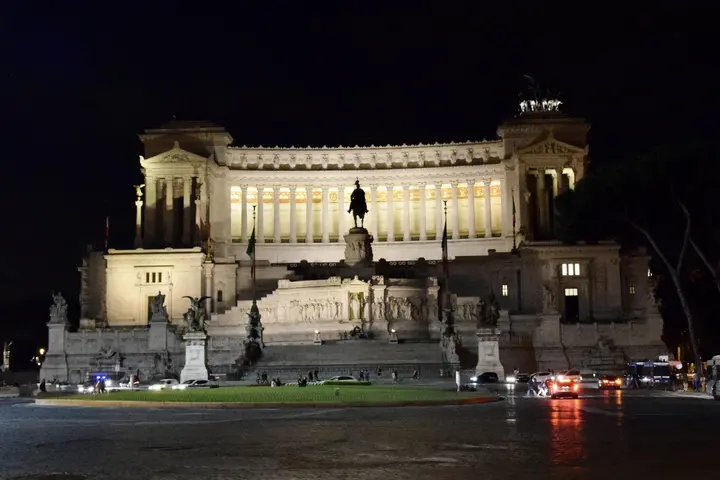
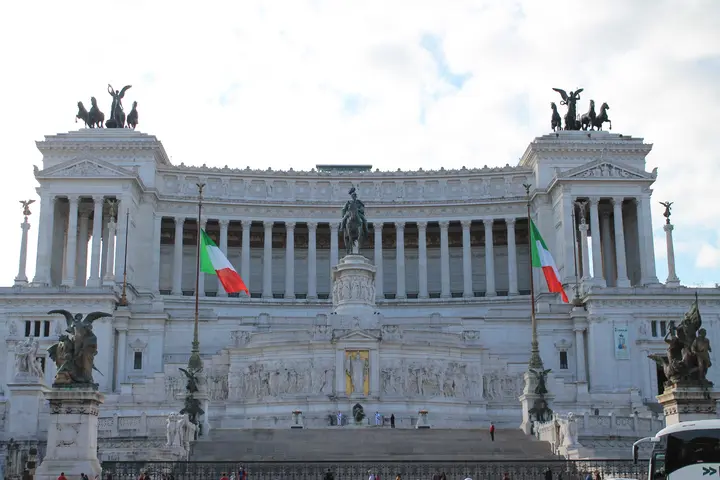
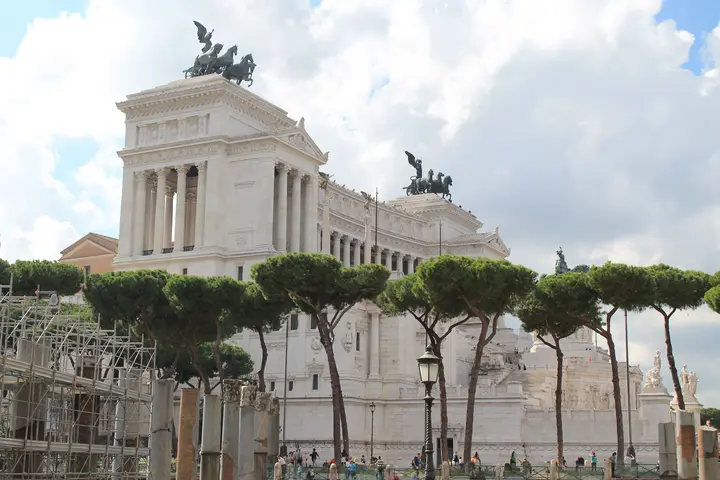
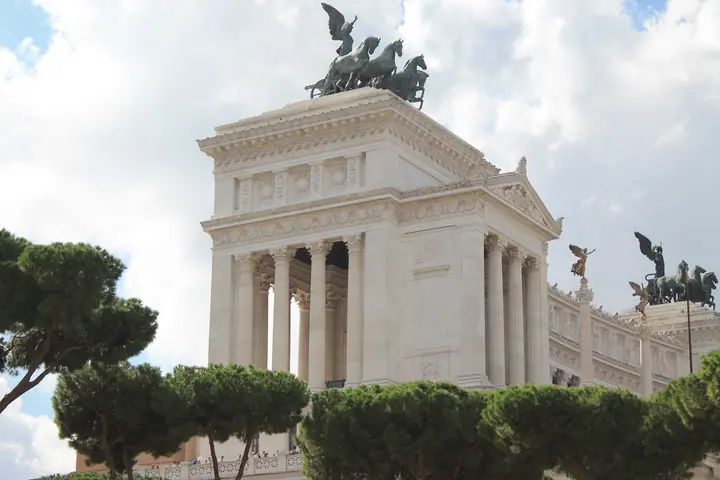
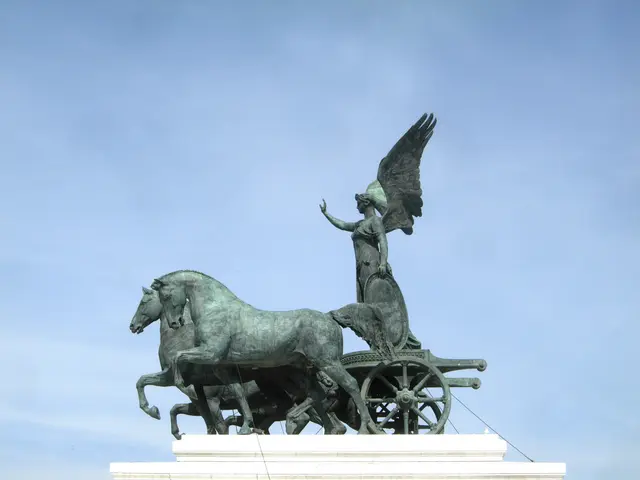

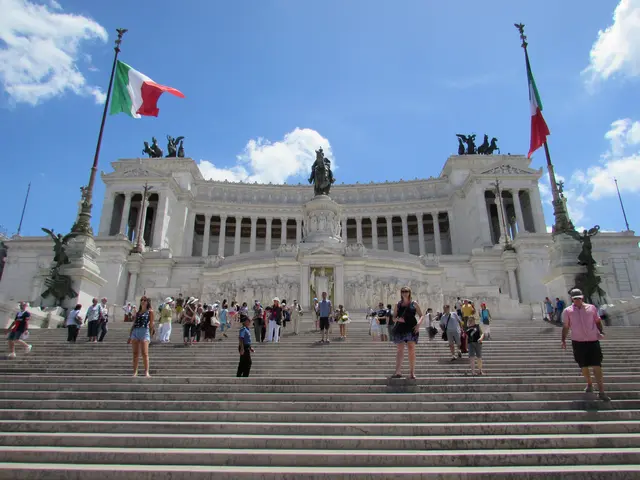
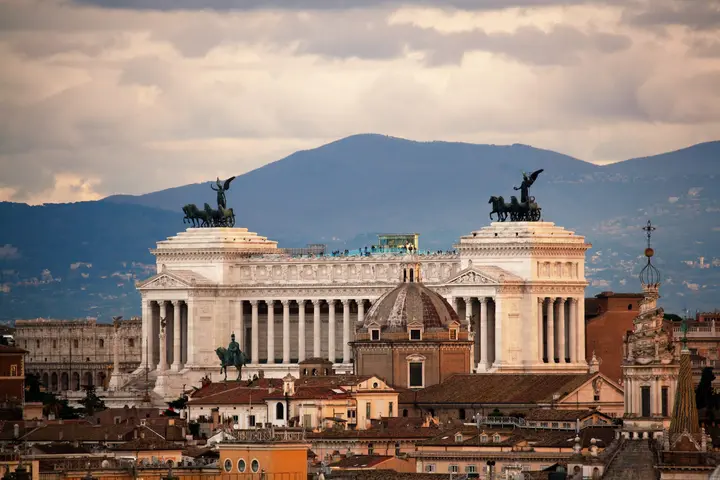
Introduktion
Monumentet for Victor Emmanuel II i Rom – kendt som Il Vittoriano – dominerer hjertet af byen. Det er bygget for at ære Italiens første konge, og denne storslåede triumfbue og romerske monument står som et symbol på national stolthed og enhed. Dets brede trapper, klare hvide marmor og rige symbolik giver besøgende både betagende udsigter og stærke historiske lektioner. I dag byder Il Vittoriano velkommen til kulturturister, undervisere og lokale.
Historiske Højdepunkter
🏛️ Et Monuments Fødsel
Monumentet for Victor Emmanuel II, eller Il Vittoriano, blev udtænkt i 1878 efter Italiens samling. Placeringen på Kapitolhøjen, valgt gennem en stor national konkurrence, forbinder den antikke storhed med en ny national enhed. Giuseppe Sacconis vinderdesign fremkaldte antikke romerske templer og Europas store triumfbuer. Byggeriet begyndte i 1885 og krævede nedrivning af et middelalderligt kvarter – et dristigt træk for at skabe et nyt civilt landskab.
🦁 Skulptur og Symbolik
Sacconis vision samlede kunstnere fra alle hjørner af Italien. Den skinnende Botticino-marmor blev brudt i Brescia og symboliserede national enhed. Vittorianos trapper, brede terrasser og ikoniske søjlegang rejser sig over Piazza Venezia, mens bronze quadrigae (vingede sejre) funkler på toppen af monumentet. Mange statuer repræsenterer italienske dyder og regioner, hvilket gør stedet til et storslået leksikon over Italien i sten.
“Den strålende hvide marmor... gav Rom et monument, der kunne måle sig med ethvert i Europa.”
— Bruno Tobia
🐴 Anekdoter og National Hukommelse
En yndet anekdote bringer Vittorianos skala til live: I 1911 fejrede billedhuggere med en middag for 24 personer inde i Victor Emmanuels bronzehests hule bug – før den blev samlet! I 1921 gav begravelsen af den ukendte soldat under gudinden Roma monumentet en hellig betydning og forvandlede alteret til et mindesmærke, bevogtet dag og nat.
“Under det store marmoralter ligger en enkelt ukendt ung mand, hvis mors tårer valgte ham…”
— Militære arkiver
🎉 Varig Civil Scene
Fra sin åbning har Il Vittoriano været vært for Italiens største ceremonier – som præsidentens årlige hyldest på Republikkens Dag. Romerne kaldte det "Skrivemaskinen" og "Bryllupskagen", men deres hengivenhed og stolthed voksede over årtier. I dag går millioner op ad trapperne for at få panoramaudsigt over byen, besøge museer eller blot for at overvære daglige flaghejsninger – en levende blanding af nationalt og lokalt ritual.
💡 Tip til Besøgende
Gå ikke glip af panoramaelevatoren, som tilbyder en fantastisk 360° udsigt over Rom fra Vittorianos tag – perfekt til fotos og refleksion.
Tidslinje og Kontekst
Historisk Tidslinje
- 1878 – Victor Emmanuel II dør; det italienske parlament stemmer for at bygge et monument.
- 1880–1882 – National designkonkurrence tiltrækker 315 bidrag fra 13 lande.
- 1884 – Giuseppe Sacconis design vinder.
- 1885 – Kong Umberto I lægger grundstenen; store nedrivninger omformer Capitoline Hill (Capitol-højen).
- 1889 – Kongelig kommission vælger Botticino-marmor fra Brescia.
- 1911 – Første store indvielse, der markerer 50-året for Italiens samling.
- 1921 – Den Ukendte Soldats Grav installeres; hellig dimension tilføjes.
- 1925 – De sidste store forgyldte bronzestatuer fuldender Sacconis design.
- 1935 – Indre Central Museum of the Risorgimento (Genforeningsmuseet) indvies.
- 1997 – Monumentet genåbnes fuldt ud efter restaurering.
- 2023–2024 – Større restaurering af skulpturer og statuer er i gang.
Nation-Building og Politisk Symbolik
Vittorianos skabelse udfoldede sig midt i Italiens bestræbelser på at definere sig selv som en samlet nation. Dets storhed var bevidst – et svar på at være en "efternøler"-hovedstad, ivrig efter at konkurrere med Paris og Berlin med imponerende offentlig kunst. Sacconis design refererede til gamle templer (især Pergamon-alteret) og forbandt symbolsk House of Savoy-monarkiet med Roms kejserlige arv. Projektets fremskridt afspejlede den nye stats ambitioner og udfordringer, med kunstneriske samarbejder, der spænder over Italiens regioner og fantastisk logistik, såsom transport af 80.000 tons marmor med jernbane. Hver fase og forsinkelse bar vægten af politisk nødvendighed og økonomisk belastning.
Urban Transformation og Omstridte Betydninger
Ved at jævne middelalderkvarterer med jorden pålagde Il Vittoriano en ny orden på Roms hjerte, der brobyggede gamle, pavelige og moderne elementer. Dens kommanderende position udløste beundring og kontrovers – romere kritiserede dens forstyrrende skala og skinnende hvidhed og gav den øgenavne som "Bryllupskagen". Men som årtierne gik, udviklede disse oprindeligt ironiske navne sig til kærlighed, hvilket signalerede monumentets assimilation i byens mentale landskab. Dens brug som et offentligt forum afspejlede dens rolle som både et top-down-symbol og et sted for populær tilegnelse.
Varig Ceremoniel Rolle og Nationale Ritualer
Installationen af Den Ukendte Soldats grav i 1921 markerede en transformation. Vittoriano blev nationens sekulære alter – en destination for kollektiv erindring og nationale tragedier. Statsceremonier ved Altare della Patria (Fædrelandets Alter) minder både om Italiens ofre og fortsatte forhåbninger. Tilpasset af monarkister, tilegnet af fascistiske ritualer og senere adopteret af den demokratiske republik viste monumentets symbolik sig modstandsdygtig og tilpassede sig hver tids civilsamfundsnarrativ, mens den opretholdt sin centrale funktion som et sted for erindring.
Bevarelsesudfordringer og Moderne Forvaltning
Bevarelse af Il Vittoriano har været sideløbende med skiftende teknologier, miljøforhold og bymæssigt pres. Forurening, klima, vibrationer fra tung trafik og virkningen af masseturisme har givet næring til restaureringsprogrammer i løbet af det tyvende og enogtyvende århundrede. Innovativt offentlig-privat sponsorering – for nylig med Bulgari – er et eksempel på kreativ finansiering og forvaltning. Vedligeholdelse af marmor- og bronzeoverflader, styring af folkemængder og engagement i aktivisme (inklusive klimaprotester) viser løbende bestræbelser på at bevare både kunst og mening.
Komparativ Kontekst: Roms Monumentale Æra
I sammenhæng med samtidige som Garibaldi-monumentet og Palazzo di Giustizia (Justitspaladset) skiller Vittoriano sig ud. Hvor Garibaldi-statuen var en populær, politisk spidsfindig mindehøjtidelighed, og Justitspaladset repræsenterede statsmagt, syntetiserede Vittoriano en mere inkluderende, lagdelt erindring om nationhood, der integrerede flere regimer og fælles identiteter. I dag forbliver monumentet et levende vartegn: sted for ceremonier, hverdagsmøder og et fyrtårn for enhed for italienerne – dets historiske, borgerlige og kulturelle arv fornyes løbende.